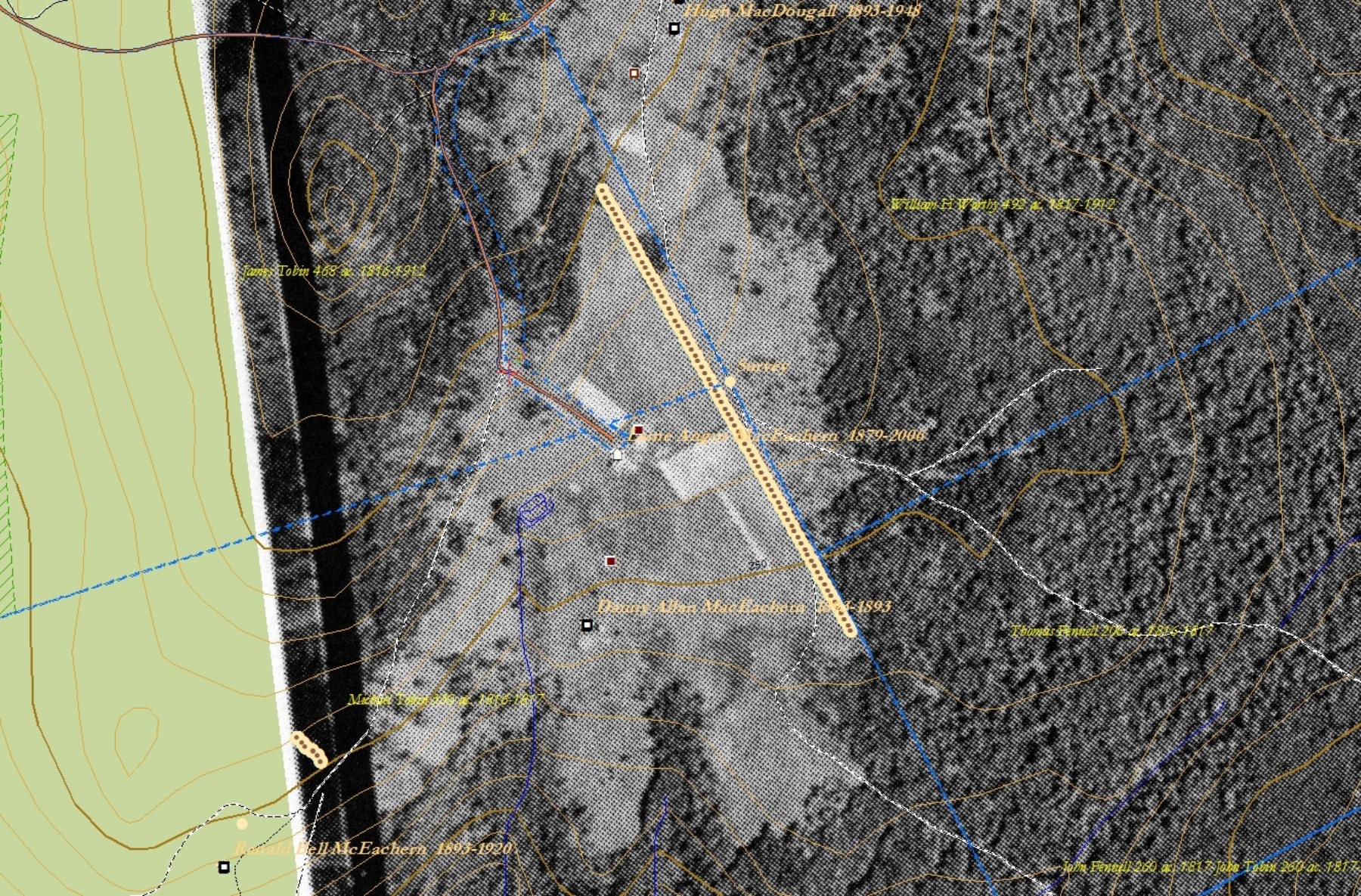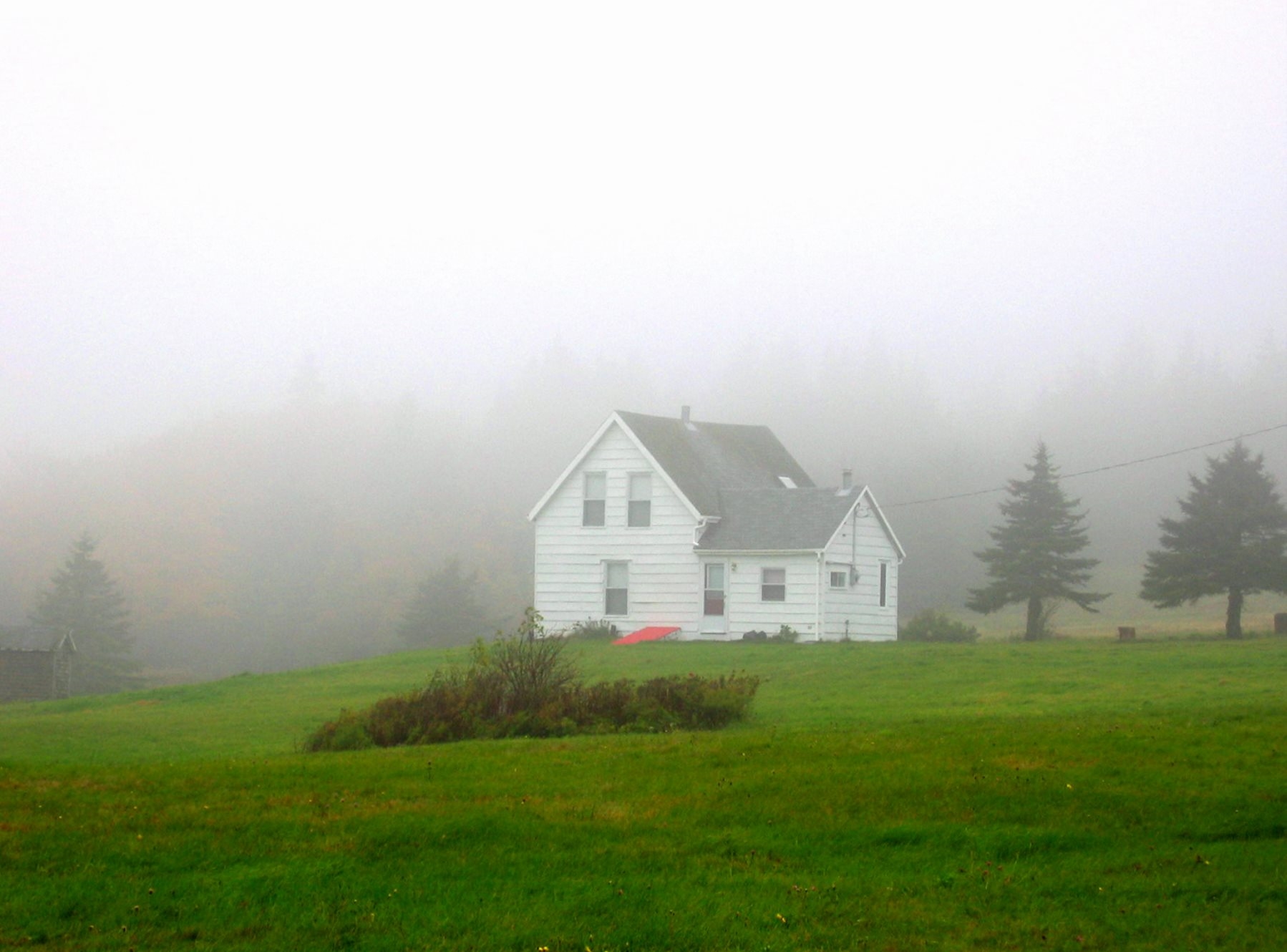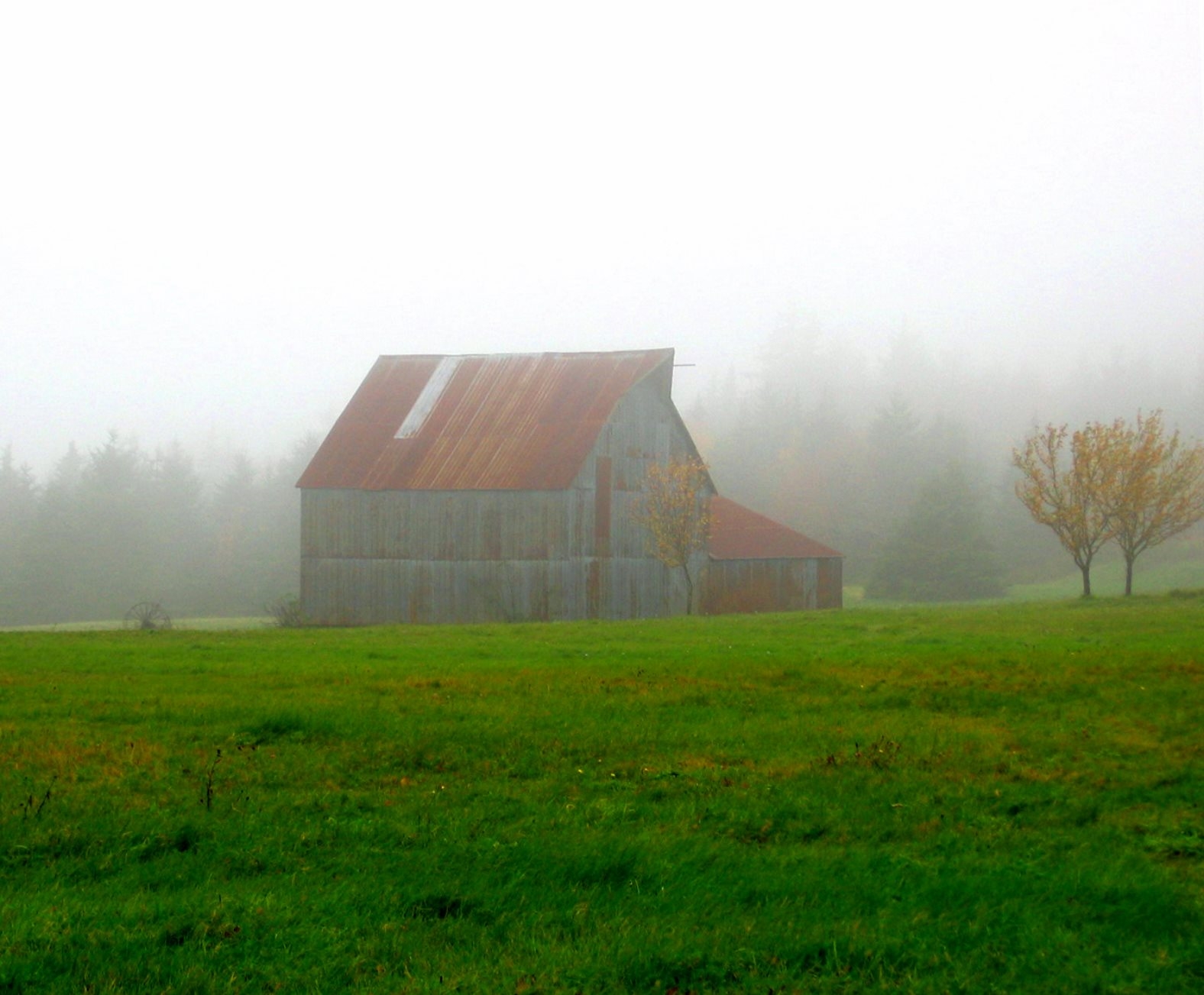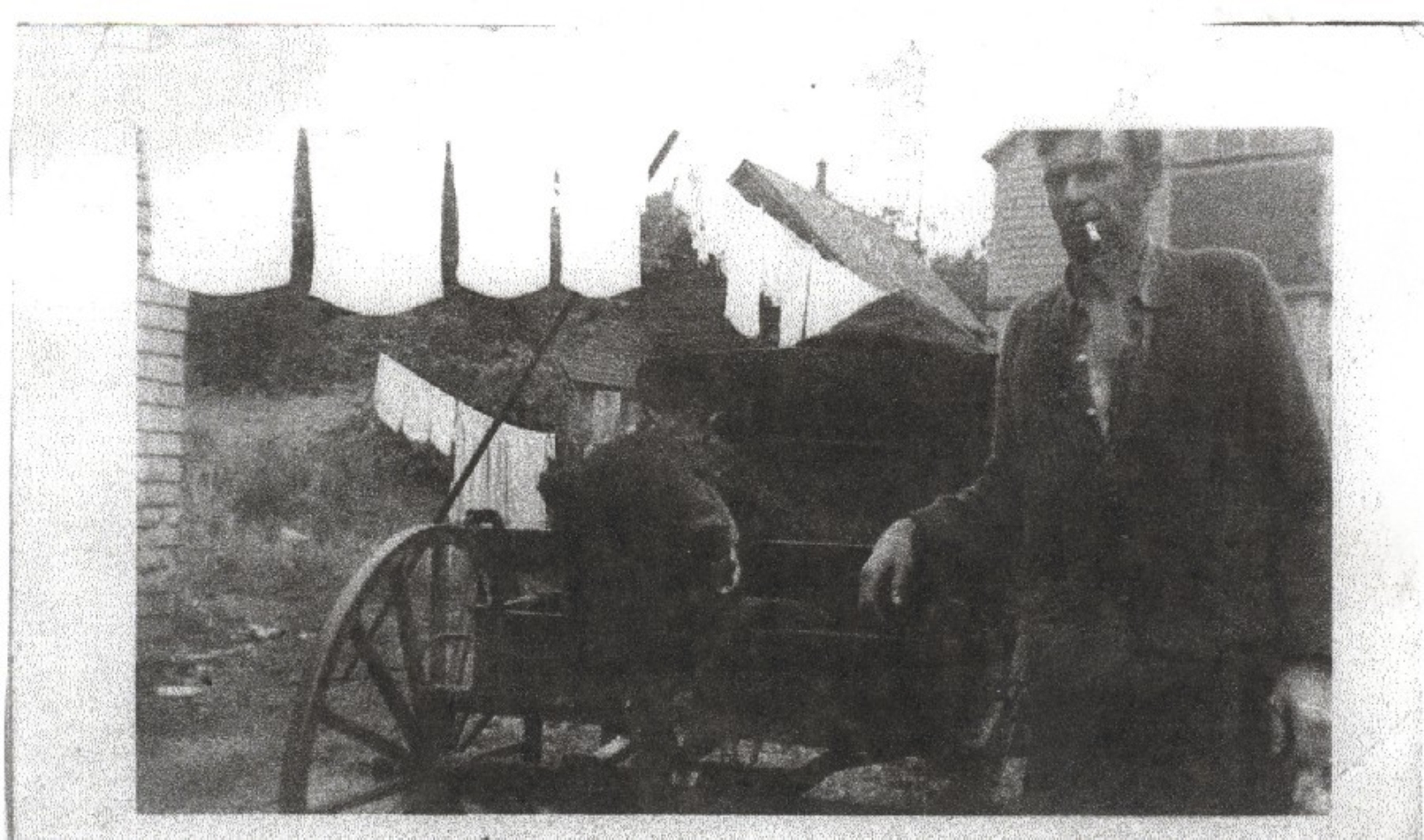Bantjes, Rod, “MacEachern_Lame_Angus.html,” in Eigg Mountain Settlement History, last modified, 14 August 2015 (http://people.stfx.ca/rbantjes/gis/txt/eigg/introduction.html).
Angus MacEachern (“Lame Angus”) (Eigg Mountain Settlement History) (Map Location)
The house at this site was built by Allan MacEachern in 1845. He was one of the pioneers who emigrated from Arisaig Scotland. The house still stands today. Allan’s son Hugh took over the farm around 1875. His son Lame Angus inherited the farm in 1920 or 21. He returned from travels out west and a stay in Butte, Montana and remained here on the farm until 1973-4 when he moved to Antigonish.[1] You can see from the aerial photographs (Figure 1) the fields that he cultivated and the pasture that he probably mowed or had cattle grazing on in 1945. He lived until 1985 and was one of the main sources of Charlie and Kenton Teasdale’s knowledge of stories of Eigg Mountain’s past.
One of his recollections concerns how his grandfather Allan felt about leaving Scotland and finding himself carving out a farm from the “forest primeval” of the New World:
“Ah yes ‘tis lonely to think about the Highlands of Scotland, [but] remember the hard times, remember we almost starved, remember we weren’t free, remember we didn’t really own the land. ‘Tis good to remember the patriotism and the love of the old home country which we left and to long for it, but we can neigh go back, we can neigh go back. There is no place for us.”[2]

Figure 1 – Georeferenced Aerial photo of Lame Angus’s property in 1945. This is the best image we have of an active farm on the mountain. You can see the difference between intensely cultivated fields (perhaps gardens) and hayfield or pasture. I have also marked the stone wall used here as a property boundary. The slight difference in orientation from the official boundary (in blue) may be attributable to the fact that the two lines were marked out in different years using magnetic north.

Figure 2 – A view of the house looking southwest, 2004.

Figure 3 – Here is the barn below the house (i.e. to the south of it). In the aerial photo (Figure 1) the clearly L-shaped house is to the south of the barn. Charlie Teasdale wonders if they may have moved it to this position.
People remembered Lame Angus even down in the States. “If there was a woman between here and Fraser’s Mills having a baby he would show up with his cart. He had some mystical ability to know when he was needed. He would say things just to get a reaction out of you. One time, his grand aunt was once apologizing for him to a priest for his behavior and the priest responded, ‘Don’t apologize, he has his characteristics, but there is scarcely a soul that went to the next world, anywhere in this area, without Angus bringing the priest to ‘um; there was scarcely a person who was sick or in childbirth without Angus going for the doctor.’” He never married, but may have had a few girlfriends.[3]
Lame Angus was also known for killing a bear with a steel rod. He and a neighbour were putting up a fence using an old drive shaft to pound in the posts. They stopped to investigate when they heard a commotion coming from the direction of Lame Angus’s still. They arrived to find a bear trying to get at the fermented “mash.” First they turned back to get a rifle, but then the idea of leaving the bear so long at his destructive work changed Lame Angus’s mind and he leapt down with drive shaft in hand and beat the bear to death. He knew he had a good story that would be worth a few rounds in the taverns in Antigonish, so he loaded the carcass onto his wagon as evidence and took it into town where he lived off the tale for two weeks.

Figure 4 – Photo of Lame Angus with the hapless bear.
If you understand Eigg Mountain to include Maple Ridge then Lame Angus was the last settler to live and farm on the Mountain.[4] However Maple Ridge settlers made a subtle distinction between those who lived “over the Mountain,” that is, on the plateau east of where Powers Brook crosses the Main road, and themselves, who lived “on the Mountain.”[5] This is a wonderfully ambiguous expression that implies that they were nonetheless “on” Eigg Mountain. Charlie and Kenton Teasdale implicitly exclude Maple Ridge from Eigg Mountain since they call William Fettle Gillis the last settler on the Mountain.